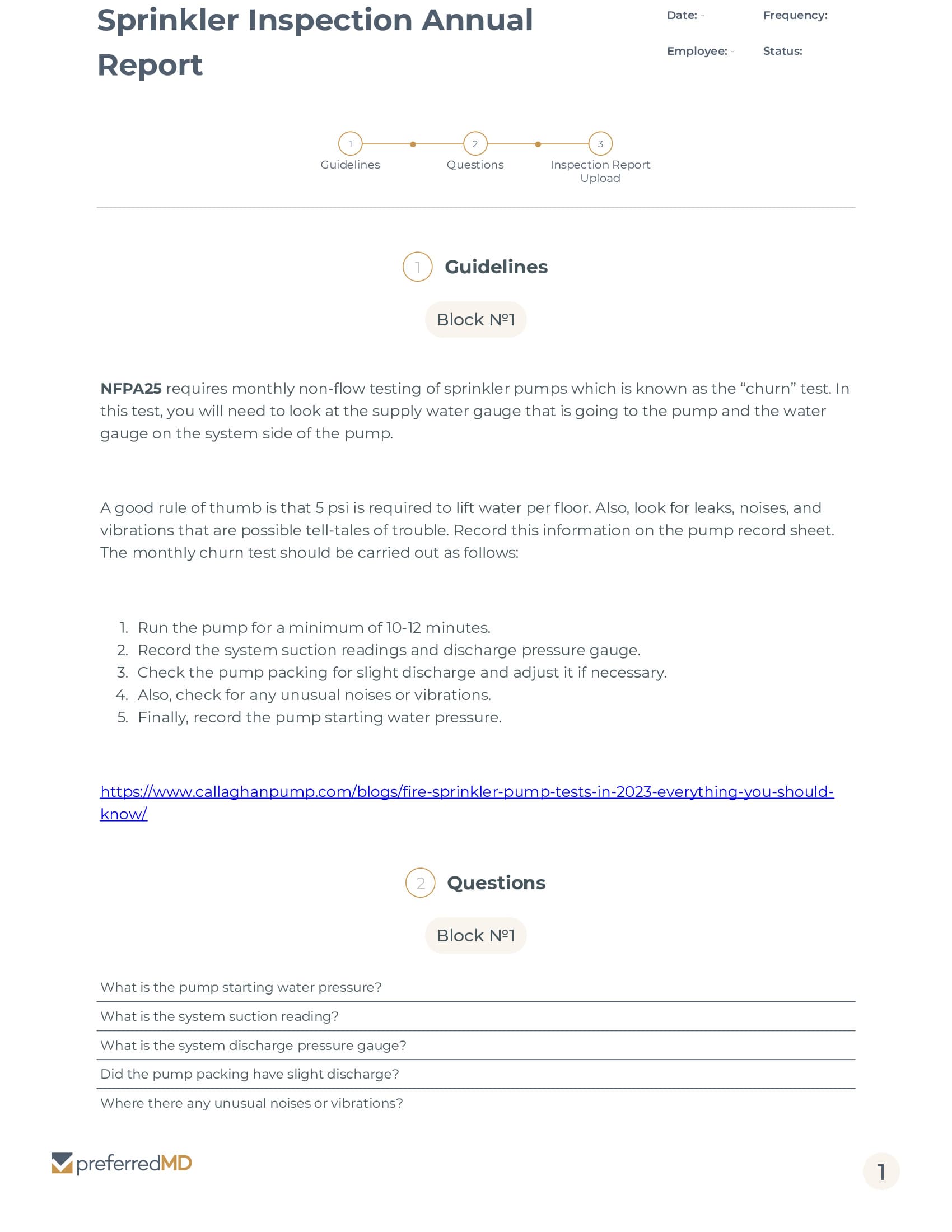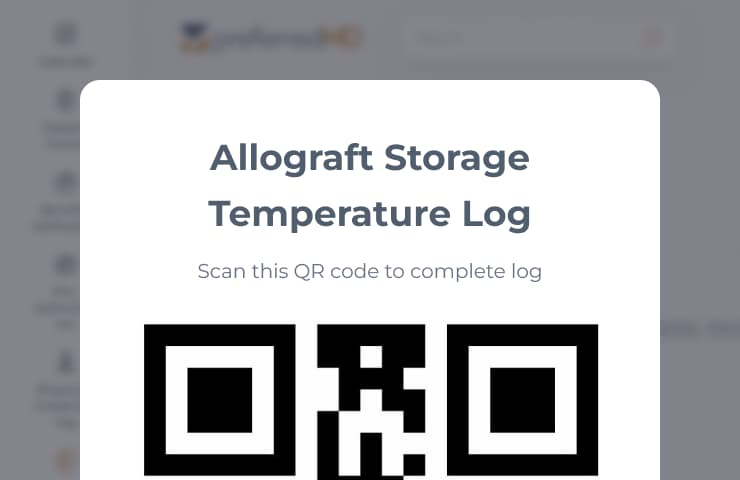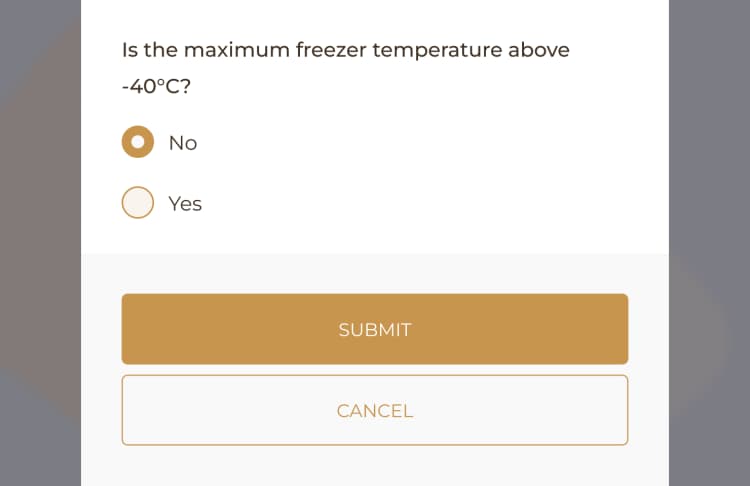Sprinkler Inspection Annual Report


How it works


Frequently asked questions
The necessary equipment usually includes tools for measuring water pressure, inspection forms or logs, and safety gear for the inspector.
Completing this report plays a crucial role in upholding fire safety standards, mitigating system failures, and guaranteeing adherence to regulatory mandates.
To fill out the Sprinkler Inspection Report (Monthly), start by accessing the template on the PreferredMD site. Next, carefully conduct the sprinkler system inspection, noting your findings in the designated areas of the template.
You can easily edit the Sprinkler Inspection Report (Monthly) on your smartphone by opening the PreferredMD mobile interface, choosing the relevant report, and making any necessary updates.
When using an Android device, you can easily fill out the Monthly Sprinkler Inspection Report by logging into the PreferredMD platform, carrying out the sprinkler inspection, and entering all the necessary information into the appropriate fields of the report.
The monthly Sprinkler Inspection Report is an essential document that needs to be completed by the facility maintenance team or designated safety personnel.
Facilities that are in need of regular fire safety inspections should use the Sprinkler Inspection Report (Monthly) to accurately record the status and performance of their sprinkler systems.
The Sprinkler Inspection Report (Monthly) is a crucial document that is typically filled out by maintenance staff or safety officers responsible for the regular inspection and upkeep of the sprinkler systems. This report serves as a record of the condition of the sprinkler systems, including any maintenance or repairs performed, ensuring that the systems are in proper working order in case of an emergency.
A Sprinkler Inspection Report (Monthly) is a comprehensive record that documents the outcomes of the monthly assessment of a building's sprinkler system. This report serves as a checklist to ensure that all components of the sprinkler system are functioning as intended and to identify any areas that may require maintenance or repairs.
The inspection report must include the following information: the date of inspection, the name of the inspector, the condition of the sprinkler components, any identified defects or maintenance requirements, and details of any corrective actions that were taken.
Penalties for late completion can vary depending on the specific contract or agreement in place. They may include financial penalties such as fines, increased insurance premiums due to higher perceived risk, or citations from regulatory bodies overseeing the project or work.
Please ensure that the Sprinkler Inspection Report is finalized by the conclusion of each month, in accordance with the monthly schedule.
During a sprinkler inspection, a data logger is a device that automatically records specific parameters, such as water pressure and flow rates.
The checklist usually includes examining every part of the sprinkler system, making sure that the sprinkler heads are free of any obstructions, and confirming that the system has the correct pressure and flow.
All fire safety checks should be conducted in accordance with NFPA standards, the manufacturer's guidelines, and the specific requirements of the facility.
You can complete the report either on-site using a mobile device through the PreferredMD platform or back at the office using a desktop computer.
You can edit reports on your Android device by opening the PreferredMD application, finding your report, and making the required updates.
Identifying potential issues early, ensuring the reliable operation of the sprinkler system, and meeting legal and safety standards are all essential aspects of completing the report.
A consistent record of sprinkler inspections is necessary to ensure that the system is always ready to function in an emergency. This requires a monthly report to be completed.
Remember to prioritize conducting comprehensive inspections, promptly updating the report with any findings, and strictly adhering to regulatory and safety standards. These measures are crucial for guaranteeing an efficient fire protection system.
PreferredMD makes compliance logging simple and paperless





![[object Object]](/_next/image?url=https%3A%2F%2Fpreferredmd.io%2Fimages%2Flog-template%2Flogs-dashboard.webp&w=750&q=75)
Get the
Open log templateRequest a demo and start your paperless journey
Schedule a demo
